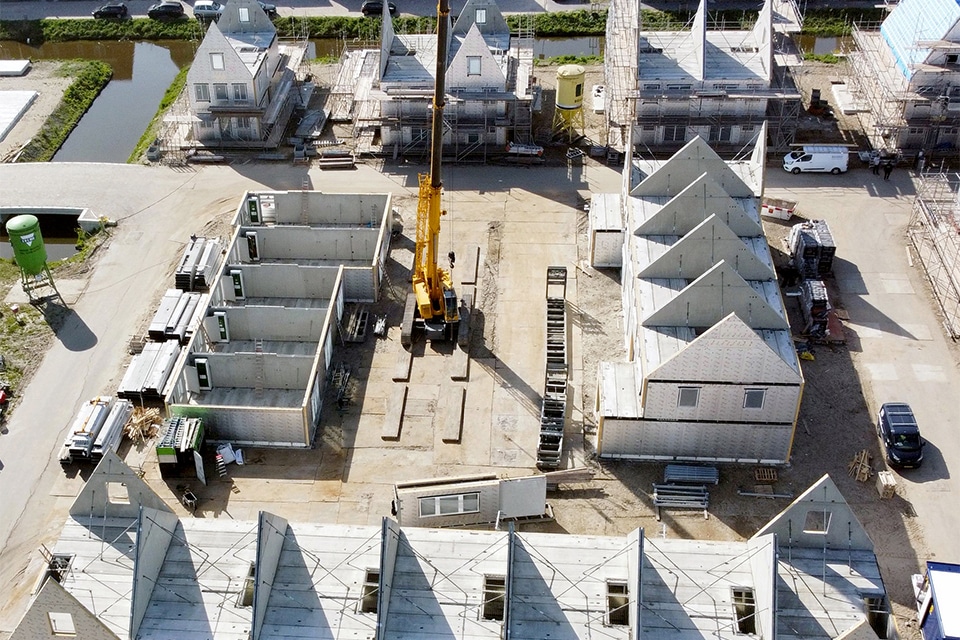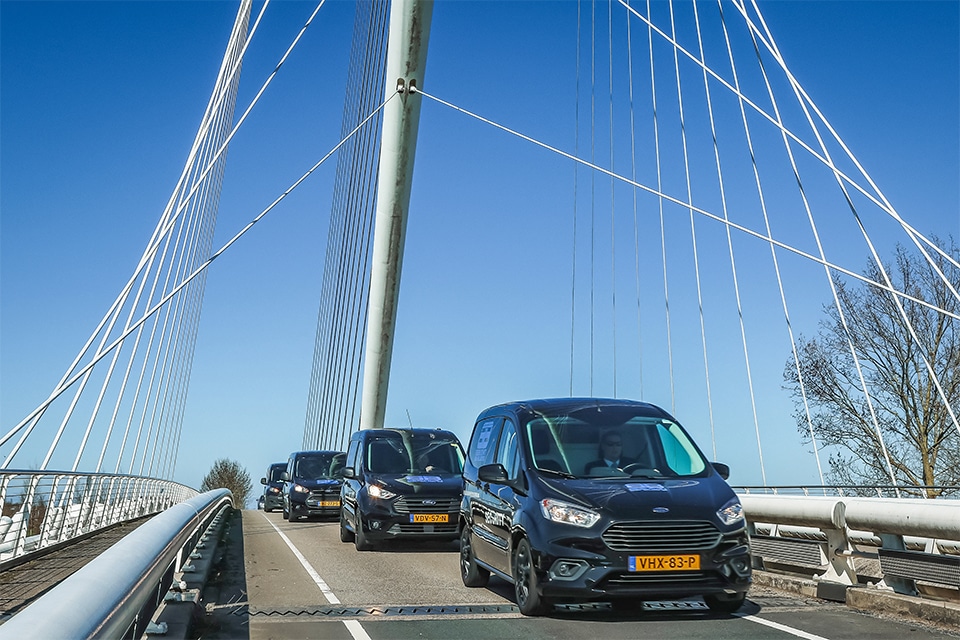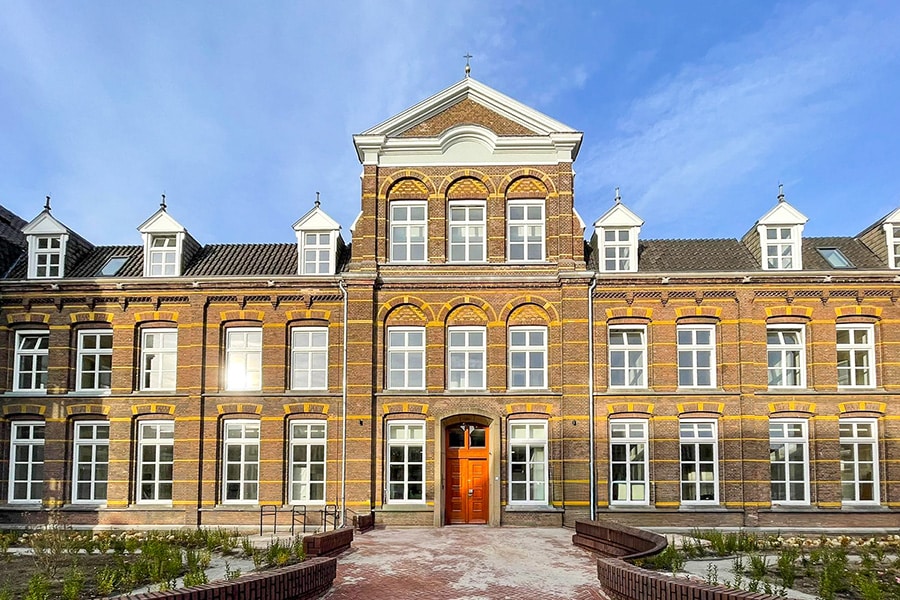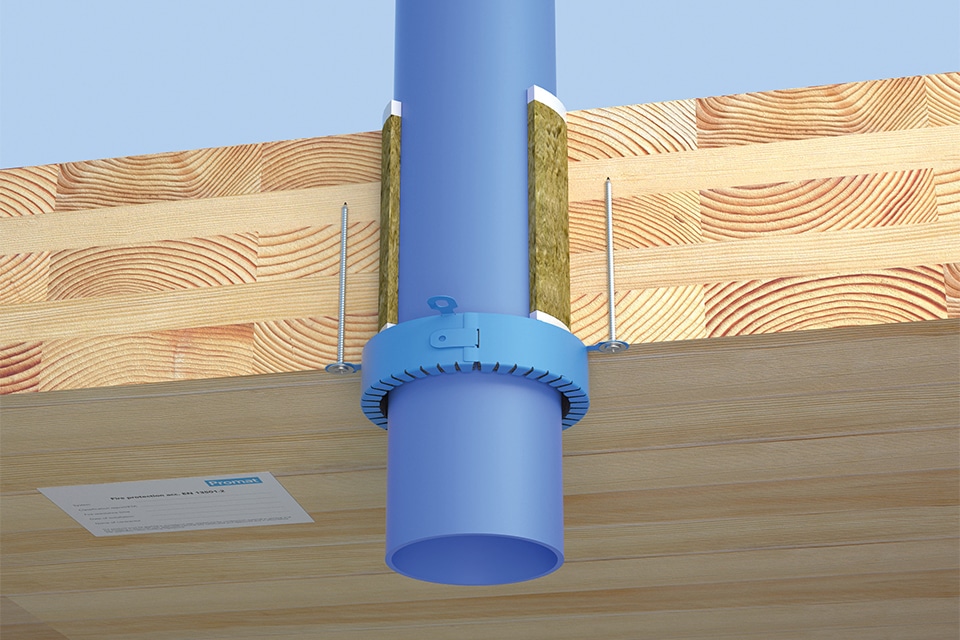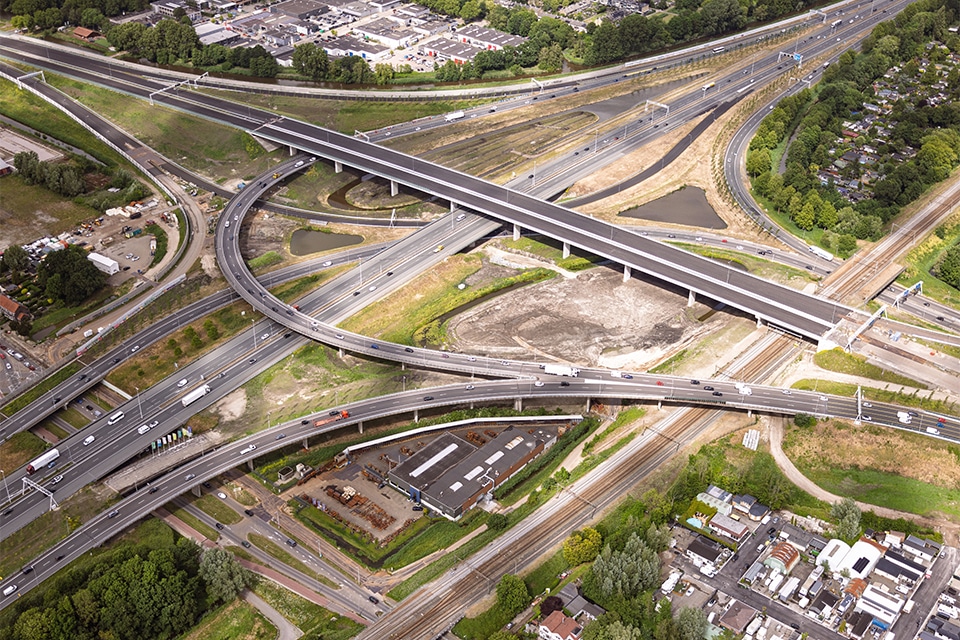
A16 Rotterdam: 11 km long energy-neutral highway
Just a few more months and then the A16 Rotterdam, an 11-kilometer-long national highway between the A16/A20 at Terbregseplein and the A13 at Rotterdam The Hague Airport, will open. Construction consortium De Groene Boog has delivered a true feat. It is a project of superlatives and innovative techniques. For example, the fly-over at Terbregseplein was built according to an incremental launching method that is unique by Dutch standards, and the 2.2-kilometer-long Rottemerentunnel can also be called far from ordinary. It is also the first DC-powered tunnel. Together with Operations Director Dieter Behaeghel, we discuss the highlights of this first energy-neutral highway with tunnel in the world.
The A16 Rotterdam is being built on behalf of Rijkswaterstaat by De Groene Boog, a construction consortium of BESIX, Dura Vermeer, Van Oord and TBI companies Croonwolter&dros and Mobilis. "On the north side of Rotterdam, from the A16 past the Terbregseplein, we are pulling the highway through and making the connection to the A13 via an arch," Behaeghel outlines the new route. "The aim is to improve traffic flow, accessibility and livability in the northeastern part of Rotterdam and the surrounding region. Part of the new connection is also a direct connection to Rotterdam The Hague Airport with its own entrance and exit."

Egyptians
The construction of the A16 Rotterdam was awarded under a DBFM contract. "It means that, as the contractor, we are also responsible for financing and maintenance for 20 years," says Behaeghel, who explains the two most eye-catching artworks for this article. "In terms of technology, the new flyover and new Rottemer Tunnel under the Lage Bergse Bos are really quite a feat. For the fly-over at Terbregseplein, we used the method of incremental launching as an EMVI solution. This is a construction method for constructing bridges or viaducts in which the bridge deck is built in sections from one abutment and then pushed over the piers to the other side using jacks. It is a methodology more commonly used in areas with difficult terrain. Teflon plates are used for sliding to eliminate frictional resistance. This is similar to the logs that the Egyptians used to transport blocks for the pyramids through the desert; the Teflon plates are our logs. During the realization of the A16 Rotterdam, this methodology came in handy, because it allowed us to build the flyover over the existing highway and interchange without any closure of the A16 or A20."
Several firsts
The fly-over is now finished, as is the Rottemer Tunnel, by the way. Although here, according to Behaeghel, the finishing touches are still being added. The 2.2-kilometer-long tunnel is only one meter above ground level. ‘Meanwhile, a mound has been built over it and trees have been planted on the tunnel roof, so that soon you won't see anything of the tunnel,’ he assures us, explaining that the necessary optimizations were also achieved during the construction of the tunnel. “The biggest gain lies in the fact that we worked with a floor of reinforced underwater concrete, which also serves as a structural floor and thus does not have a temporary function as in a traditional construction method. It is the first time it has been applied on this scale. Sustainability was the main driver here, because it saves a huge amount of concrete and you don't have to excavate as deeply.”
What else makes the tunnel unique is the installation technology. "It is the first DC powered tunnel, and that makes it more reliable and energy efficient. Nowadays everything is designed in BIM 3D, but here we went one step further by creating a virtual twin of the tunnel, the TWIN16. In this digital version of the tunnel, all systems and scenarios were tested at the front. A lot of errors were taken out on the front end this way."

Artwork 58
De Groene Boog was awarded an additional task in the course of the project. "Artwork 58 is located in the A16 just before the Terbregseplein and after investigation by the Department of Public Works, the viaduct was found to be in a worse condition than previously anticipated," says Behaeghel. "To ensure safety, we hastily placed a support structure under the viaduct and then worked with Rijkswaterstaat to come up with a final solution. That led to a complete replacement of the viaduct and thus an additional assignment for us. Initially, we examined the option of completely closing the existing A16 and building a new viaduct in four weeks. Traffic models were made for that and they showed that such a closure would cause traffic jams all the way to Utrecht. It amounted to 70 million vehicle loss hours. So we worked out an alternative with a temporary diversion of the road over an auxiliary bridge, and we are still working on that. In September, traffic in both directions will be able to cross the new structure again, just before the opening of the A16 Rotterdam."
Of course, such an extensive project cannot be done without disruption. “Yet we managed to limit that as much as possible,” says Behaeghel. “For example, we constructed a separate construction road with several auxiliary bridges along the route to minimize disruption to local traffic. The construction methods chosen also contributed significantly to preventing disruption. Furthermore, we see it as our social duty, for a project of this size in an area like Rotterdam, to go a little further than simply limiting disruption. We have therefore expressly involved the surrounding area in the project and even set up an educational program that is used from elementary school to TU Delft. All in all, you could write a book about the A16 Rotterdam,” Behaeghel says in conclusion. The A16 Rotterdam will open to traffic in October.
